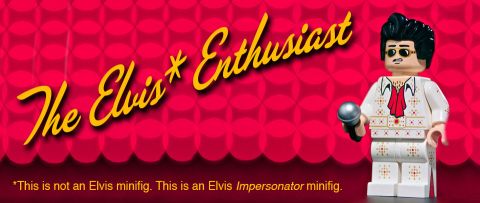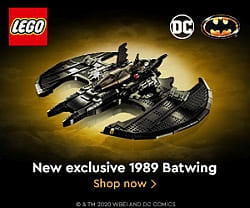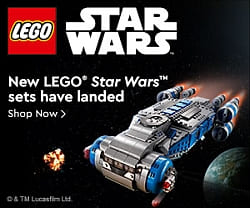A new month means new offers and promotions from LEGO, so let’s take a look at what we are getting this time. As you know, last month LEGO released a big wave of new sets and themes, so this month is a lot calmer – which is not a bad thing, as it allows us to catch up LEGO sets we didn’t have a chance to get last month. 🙂
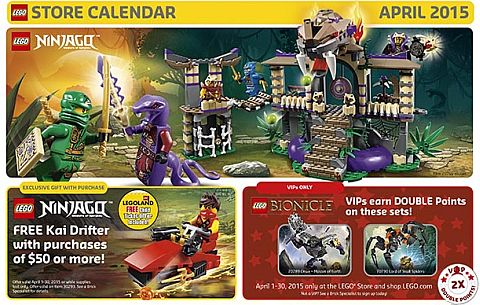
➡ 2015 LEGO NINJAGO SETS & FREE POLYBAG: If you place an order this month for $50 or more, you will receive the #30293 LEGO Ninjago Kai Drifter set as a free gift. While this offer is valid for all orders not just Ninjago sets, you might want to check out the 2015 LEGO Ninjago sets released just last month. You can find all the new sets under the LEGO Ninjago section of the Online LEGO Shop.

➡ 2015 LEGO BIONICLE SETS & DOUBLE VIP POINTS: The resurrected LEGO BIONICLE theme got a large wave of brand new sets in January, and LEGO is continuing promote the theme with special offers. Last month we got a free LEGO BIONICLE Hero Pack with any purchase, and this month you can get Double VIP Points on two of the new LEGO BIONICLE sets: the #70789 LEGO BIONICLE Onua Master of Earth and the #70790 LEGO BIONICLE Lord of Skull Spiders. You can find all the BIONICLE sets at the LEGO BIONICLE section of the Online LEGO Shop.

➡ 2015 LEGO ELVES SETS & EVENTS: The first wave of LEGO Elves were released last month, and from everything I have heard so far, the theme has been extremely successful and well received by the LEGO fan community. LEGO Elves have literally enchanted not just children, but also adult LEGO fans. The beautiful colors, sweet accessories, cute mini-dolls, and really nice builds are hard to resists! If you live near a LEGO store, or planning to visit one, you can try out and play with the new LEGO Elves sets until the 26th of April at LEGO store locations. I think you will really like them. You can find all the new sets at the LEGO Elves section of the Online LEGO Shop.

➡ 2015 LEGO SIMPSONS SETS: For LEGO VIP members the big news this month is that they will have early access to a new exclusive LEGO set from mid-April. While the calendar doesn’t say this specifically, we can be pretty sure that this is going to be the recently announced #71016 LEGO The Simpsons Kwik-E-Mart. (There is also going to be a second series of LEGO Simpsons Collectible Minifigs, but I’m not sure exactly when they will be released.) The LEGO Simpsons Kwik-E-Mart will be available for non-VIP members in May. We have discussed the LEGO Simpsons Kwik-E-Mart previously (see link at the end of this post), so I won’t repeat details here, however I will say that that I’m pretty sure this set is going to be a real winner and will likely be hard to find for a while until LEGO is able to catch up with demand. I also expect a spike in demand for the previously released #71006 LEGO The Simpsons House as people want to get into collecting the sets.
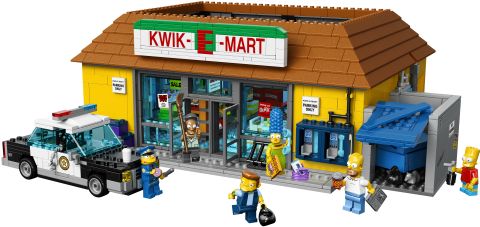
In addition to the above mentioned promotions, don’t forget about all the exciting new sets that were released last month, including LEGO Pirates, LEGO Ultra Agents, LEGO Speed Champions and LEGO Marvel Super Heroes. And if you are shopping online, it is worth taking a look at the Sales & Deals section of the Online LEGO Shop before you check out. There are some nice sets there with a good discount, and likely more will be added as they get retired. If you live near an official LEGO store, there are other events you can participate in during the month. On April 7th, the Monthly Mini Model Build will be a UFO. And on April 18th and 25th kids can participate in the LEGO Club Meetings.
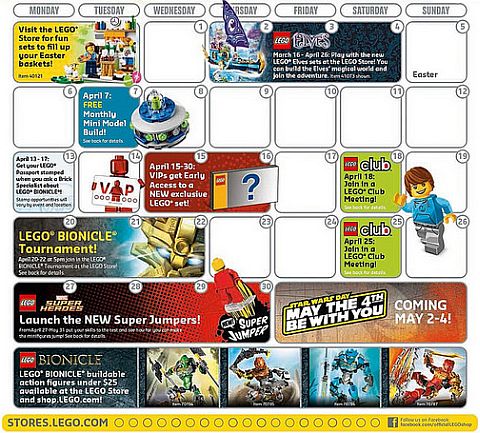
So what do you think? Are you planning to take advantage of any of the offers this month? Feel free to share your thoughts and discuss in the comment section below! 😉

And you might also like to check out the following related posts:
- LEGO Simpsons Kwik-E-Mart & New Minifigs
- LEGO Helicarrier Review & Power Functions
- 2015 LEGO Marvel Super Heroes Reviews
- 2015 LEGO Ninjago Sets Reviews
- 2015 LEGO Ultra Agents Sets Reviews
- 2015 LEGO Elves Sets Video-Reviews
- 2015 LEGO Friends Sets Reviews
- 2015 LEGO Speed Champions Reviews
- LEGO BIONICLE – Set Reviews & Thoughts
- LEGO Juniors Supermarket Review & More!
- 2015 LEGO Pirates Sets Reviews






